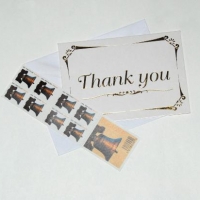Be Thankful: How to Give and Receive Appreciation at Work

How often do your customers thank you for your efforts? What about your manager and your coworkers? For that matter, how often are you the one doing the thanking?
Thanksgiving reminds people to express thanks, but the workplace suffers from what this video describes as a sincere lack of gratitude. The workplace, it appears, is dead last in the list of places where people thank each other. Excuses include being pressed for time, getting nervous about looking silly, or just not thinking of doing it.
Nevertheless, people who feel appreciated tend to have more positive attitudes and greater levels of motivation to continue to deserve that appreciation. And those who give appreciation benefit as much as those on the receiving end. The best part: Expressing appreciation can become contagious, and that’s a wonderful thing to spread around.
That’s why temperature readings begin with appreciations. A temperature reading is a simple yet powerful communication tool created by Virginia Satir, a family therapist whose models and tools are being used with great success in software organizations. It can help teams reduce tensions and interact more constructively and productively.
In the Appreciations segment of the temperature reading, everyone who would like to can express an appreciation to one or more of the other members of the team. An appreciation can be for anything, whether critical to the project (“I appreciate you for helping me make my deadline”) or simply a kind gesture (“I appreciate that you brought doughnuts to our meeting”). Seeing people light up in response to your recognition is uplifting, as is the discovery that something you did was more important to others than you realized.
Of course, it’s not necessary to wait for a formal activity to show appreciation. The ways to do so are numerous, such as spoken gratitude (“Thanks for…”), writing an email message (“Just wanted to let you know how much…”), or spending a few minutes asking how a coworker is doing. Whatever words or deeds you choose are fine, as long as you offer them sincerely and without the expectation of anything in return.
Sometimes, even better than a spoken thank-you is a written one. Sure, you can express the same sentiment by email, but a handwritten note or card makes a much bigger impression. Simply keep some cards handy, and from time to time, write a brief note of appreciation to a customer, manager, coworker, or employee: “You made my day when…” or “It meant a lot to me when you…” or “I appreciated having you ….”
Once you start thinking in these terms, finding the words is easy.

